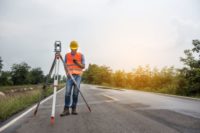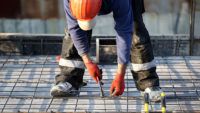Safety first: Protecting workers in the oil and gas industry as fatalities and injuries are on the rise

Smederevac / iStock / Getty Images Plus
While the oil and gas industry has always had higher incidence and mortality rates than most other sectors, there has been a concerning uptick in both figures recently. Safety professionals must address this trend early on to ensure the workforce remains protected.
The oil and gas industry is increasingly unsafe
Several regulatory and reporting agencies have observed accidents for workers in the oil and gas industry are on the rise. Whether they work with pipelines, on oil rigs, as drivers or at well sites, they face higher incidence and mortality rates. Naturally, a growing concern exists over why these figures are suddenly climbing — and what safety personnel can do to stop them.
Under normal circumstances, the frequency of on-the-job accidents would be concerning enough. The considerable upsurge in the number of severe and fatal accidents highlights this issue’s severity. In 2022, the number of preventable fatalities in oil and gas extraction increased by 20% year-over-year, amounting to 16.1 deaths per 100,000 full-time workers, and these numbers have recently increased.
The reality of injuries and fatalities in oil and gas
Concerningly, numerous types of work accidents are on the rise in the oil and gas industry — everything from slip-and-fall incidents to machinery hazards are becoming more frequent. This trend indicates a widespread, underlying safety issue remains unaddressed.
The following are some of the industry’s most common — and disabling — work accidents:
Slip-and-fall accidents: Oil spills are often imperceptible. Even when they are visible, workers underestimate their risk. These accidents accounted for 18% of nonfatal work incidents.
Hazardous fumes: Even temporary exposure can result in medically-consulted injuries. Long-term exposure can result in chronic breathing issues and an increased cancer risk, resulting in serious legal problems.
Confined spaces: Hazardous pollutants build up much faster in poorly ventilated confined spaces. In addition to chemical exposure and asphyxiation, workers risk entrapment and engulfment.
Impact hazards: About 60% of on-site fatalities are caused by caught-in, struck-by and caught-between hazards. Unless workers react swiftly, accidents with equipment like rotating drills, oil derricks and drilling hoses are often fatal.
Fires and explosions: Of course, oil is highly flammable. If workers aren’t burned, they risk fracturing bones after being thrown by an explosion. Hazardous smoke inhalation is another concern in these situations.
Repetitive strain: Repetitive strain is relatively minor compared to other disabling injuries, so safety personnel often deprioritize it. However, its frequency and tendency to reaggravate make it a significant safety threat.
Machinery hazards: Machinery was responsible for about 30.1% of the oil and gas industry’s 82,366 work-related severe injuries reported to the Occupational Safety and Health Administration from 2015 to 2022.
Incidents like these damage companies’ bottom lines, destroy equipment and demoralize the workforce. Safety managers must act swiftly to protect workers’ well-being and curb the rise of on-the-job accidents.
Why safety issues are progressively worsening
While several factors contribute to worsening safety in the oil and gas industry, deviation from standard safety protocol is likely among the main drivers. Anecdotal evidence shows workers make mistakes and violate corporate policy when they feel rushed or on edge.
A release from the Bureau of Safety and Environmental Enforcement (BSEE) demonstrates how deviation from safety protocol has manifested in the oil and gas industry. It details how a vacuum nozzle became stuck inside a tank during a routine cleaning. The worker — who wore a respirator not designed for the space — quickly lost consciousness after fully entering the tank.
His colleagues found him lying face down in fluid and had to administer cardiopulmonary resuscitation to revive him. Later, a BSEE investigation revealed he felt compelled to rush, which prompted him to enter the tank without authorization or adequate personal protective equipment.
Technology that can mitigate on-the-job accidents
Implementing policies outlining expectations and regulations is no longer enough — safety personnel must ensure compliance. They should consider leveraging modern, scalable technologies to accelerate and supplement safety training.
Virtual reality
Virtual reality (VR) technology is ideal for simulating training experiences. When someone puts on a headset, they can be instantly transported into a realistic virtual replica of their worksite, enabling them to have no-risk, hands-on experiences.
Whether training professionals simulate life-threatening situations or rescue plans, they improve workers’ reaction times and drive home the importance of compliance. Compared to classroom learners, VR users complete courses four times faster and are four times as focused.
Augmented reality
Augmented reality (AR) delivers augmented, interactive overlays within an individual’s field of vision without altering their surroundings. Safety managers can program these headsets to give warnings, supplemental tips or material safety data sheets in real time.
Mixed reality
Mixed reality (MR) is a combination of AR and VR technology. In training applications, it can improve memory retention and reduce costs. The ability for physical and virtual objects to co-exist creates novel use cases.
When combined with spatial computing hardware — a combination of motion sensors, high-definition cameras and microphones that turn real-world details into display data — MR can deliver realistic, immersive experiences that underscore the importance of training sessions.
Strategies safety personnel can utilize today
Safety personnel can curb the rise of injuries and fatalities with well-informed strategies.
Conduct regular safety audits
When workers get away with an unsafe practice once, they feel comfortable doing it again. Eventually, their deviation from protocol becomes routine, and they don’t realize the severity of the consequences until it’s too late. It only takes one incident to cause a disabling injury or fatality.
People who feel pressure from higher-ups and work in strenuous environments will often take shortcuts. The onus is on safety personnel and managers to ensure they don’t get away with such careless actions. Audits are crucial and should be conducted frequently.
Establish a culture of safety
Carelessness can spread like a disease on an oil rig or a well site. Leaders should work to establish a safety culture by creating foolproof protocols, surveying staff and deploying anonymous feedback mechanisms.
Leverage microlearning
Since staff forget at least 50% of the material within days of training, conducting safety sessions once every month may be inadequate. At the same time, oil field workers don’t exactly have an abundance of free time to make attending weekly courses feasible.
Microlearning courses deliver content in bursts — typically a few minutes long at most — to increase memory retention and focus. It often incorporates short quizzes, matching games or recall tasks to improve outcomes.
Swift action is key to protecting oil and gas workers
The sooner safety professionals act, the fewer injuries and fatalities will occur in the oil and gas industry. While the responsibility of safety ultimately falls to those who oversee crews — and the workers themselves — the importance of training and awareness cannot be overstated.
Looking for a reprint of this article?
From high-res PDFs to custom plaques, order your copy today!






